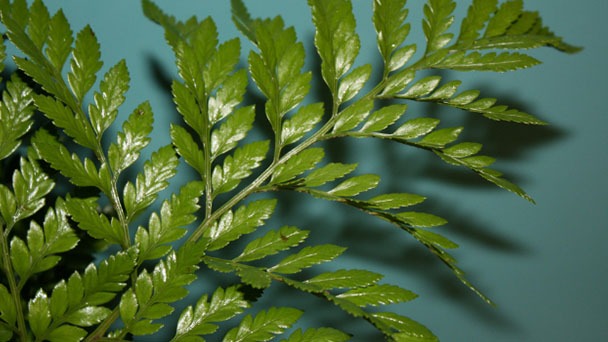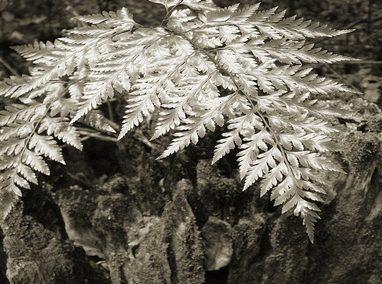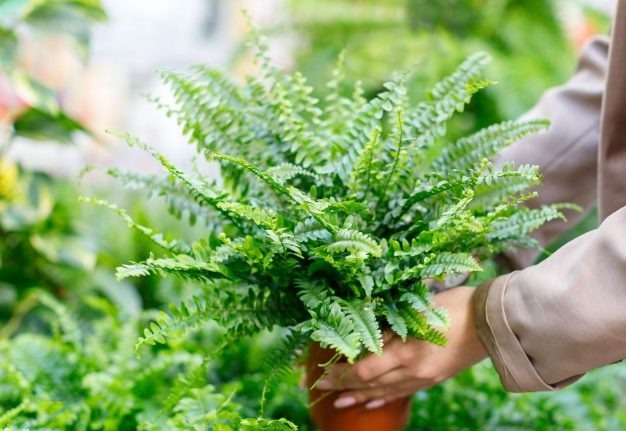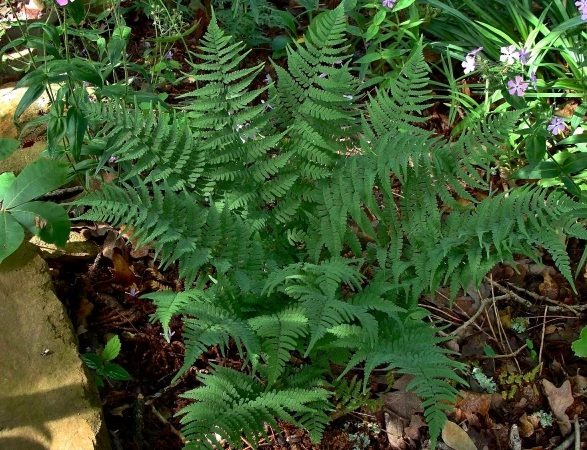How to Grow Leatherleaf Fern - Is It Annual?
Written by Ivy
Jan 09 2023

The leatherleaf fern is an evergreen plant that can be grown indoors as a houseplant or outdoors in warm climates. South Africa is home to the leatherleaf fern, which prefers a warm, humid climate. When provided with sufficient nutrition and moisture during the spring and summer growing seasons, the fern maintains its attractive deep green hue.
The key to successfully growing this low-maintenance fern at home is understanding the ideal growing conditions. No matter if a plant is grown outdoors or indoors, the right conditions are necessary for it to look its best and to live a long, healthy life.
Leatherleaf Fern Description

When grown in the best conditions, leatherleaf ferns mature at a height of 3 feet and a spread of 3 feet. They have underground rhizomes that help them spread slowly, and they can cover a 5-square-foot area in lush, glossy green growth. Each elaborate, bipinnate frond is 2 1/2 feet long and up to 8 inches wide with a leathery texture that gave the plant its common name. Moon Valley Nurseries describes the leatherleaf fern as "delicate-looking, but durable," making it a good fern for more challenging locations where other ferns may not survive.
From southern Africa to Australia and from South America up into the Caribbean, this fern's original habitat is subtropical regions. It thrives in warm, humid environments like woodlands and areas close to waterways, where it can withstand deep shade and browsing animals without much damage. Although leatherleaf ferns can be kept in a variety of conditions, ideal conditions will help them grow and look their best.
Leatherleaf Fern Care
Size & Growth
Depending on the growing environment, the evergreen herbaceous fern Rumohra adiantiformis can reach heights of 2 to 4 feet.
The plant has triangular-shaped leaves or fronds that are dark green in color, lacy-looking, finely cut, glossy, and glossy.
The absence of separate reproductive fronds is one trait that sets the leatherleaf fern apart from the majority of other fern species.
Instead, the reproductive clusters, called sori "fruit dots", are located on the underside of the dark green leaflets.
The fern species can grow in pots, hanging baskets, and small spaces because it spreads slowly.
When grown outdoors, make sure to leave 24" – 36" inches of space between each fern.
USDA hardiness zones 9 to 11 can withstand the fern.
Flowering and Fragrance
Rumohra does not have flowers because it is a fern species.
Evergreen year-round.
Under less-than-ideal conditions, maintains the integrity of its fronds and deep green color.
Light & Temperature
A position with some shade and filtered sunlight is preferred by Adiantiformis.
Although the plant can tolerate complete shade, it cannot tolerate full sun or direct sunlight, so take care not to expose your plant to either of these conditions.
While leatherleaf can tolerate bright, indirect light indoors, it prefers shaded areas for growth outdoors.
Avoid planting them outdoors if you live in an area where the temperature drops below this in the winter because the plant cannot tolerate temperatures below 24 degrees Fahrenheit (-4 degrees Celsius).
Zones 9 to 11 of the USDA's hardiness chart.
Watering and Feeding
Leatherleaf ferns need a certain amount of light, soil, and water to grow, despite not being particularly labor-intensive.
Rumohra adiantiformis plants require routine watering to grow, but once they are well-established, they can survive with less frequent watering.
However, keep in mind that they only have a modest tolerance for drought.
Additionally, water that is salty or has a high mineral content is intolerable to plants.
During the growing season, fertilizing the plant with a half-strength liquid all-purpose fertilizer once a month aids in preserving the color and radiance of its foliage.
Depending on the type of soil the ferns are planted in, the fertilizer's frequency and dosage will change.
The transplanted rhizomes shouldn't receive fertilizer until they begin to form feeder roots.
Soil & Transplanting
The species of fern that are used as houseplants can grow in loam, clay, or sand, but they require soil that is rich in organic matter, moist, and well-draining.
To achieve the best results, top-mulching the plant is advised by experienced gardeners.
It also favors soil that is acidic.
Grooming and Maintenance
The fern is a low-maintenance plant that requires little from your end.
In the early spring, just as the fresh growth begins, trim the old fronds to the ground with a sharp knife.

How to Propagate Leather Fern
Leather-leaf can be propagated through spores or rhizome divisions, but non-commercial planters tend to favor the latter approach more.
Take about 3" – 5" inches long terminal rhizome cuttings at the beginning of the plant's growing cycle, in spring, and plant them in separately in potting filled with sterile and well-draining soil.
Include a few leathery fronds in the rhizome cuttings for best results as this helps the rhizome divisions take root.
While the leather-leaf fern naturally spreads through spores in the middle of summer, gardeners collect and sow the spores.
Sowing spores on the surface of a clean, moist growing medium is how spores are propagated from them.
The ideal mixture for cultivating Rumohra adiantiformis via spores is thought to be one that contains equal amounts of loam, coarse sand, peat, and leaf mold.
Iron Fern Pest Or Diseases
Under-optimal growing conditions can result in disease problems with leatherleaf ferns. Despite the fact that these ferns prefer warm, moist environments, the University of Florida IFAS Extension notes that these conditions also favor the growth of bacteria and fungi. The common fungi pythium root rot, anthracnose, and leaf spot can affect the appearance and general growth of leatherleaf ferns. A bacterial or fungal pest is indicated by brown or discolored foliage, poor growth, and dieback.
When you suspect your leatherleaf fern is sick, the most likely cause is poor drainage and excessive moisture on the foliage. Repot the fern or move it to a new location with better drainage, new soil, or a container or bed. If the soil feels dry beneath the surface, only water. When watering leatherleaf ferns, water at the base of the plant rather than spraying from above to direct water toward the roots and keep it off the leaves, which helps prevent disease.
Leather fern plants can get affected by:
- Mites
- Scale insects
- Fern borers
- Leaf miners
- Mealybugs
- Leafhoppers
Although the leatherleaf fern is susceptible to fungal diseases as well, most of them can be avoided by using sterile growing mediums and tools.
If you have established plants, you might also think about using a fungicide.
Root rot may be brought on by excessive watering and poor drainage, which may also cause wilting and change the color of the foliage.
Uses for Rumohra Leather Leaf
Because its fronds last a long time, Rumohra adiantiformis is grown as an ornamental plant, primarily as a ground cover. The cut foliage is also frequently used in floral arrangements.
Brazilians place a high value on the fern species due to the fact that many locals make a living by cutting the fronds from the ferns and selling them as souvenirs.

Conclusion
In shady areas, the Leatherleaf fern is grown as an ornamental plant or used as greenery in the cut flower industry. The plant should be kept in partial shade so that it can control the amount of light exposure because it dislikes direct sunlight. Use an all-purpose liquid fertilizer once per month while the plants are growing.
Latest Updated
- Benefits of Bugleweed - 7 Science-backed Health Benefits
- Bugleweed Dangers & Side Effects - Is It Poisonous?
- How to Plant Evergreen Trees - What You Should Know
- When to Plant Evergreens - Grow Guide for Evergreen Trees
- 12 Wonderful Evergreen Shrubs for Your Garden
- 12 Popular Evergreen Plants with Pictures for Beginners
- When And How To Prune A Lilac Bush Like a Pro
- How to Grow & Care for Lilac Vine (Hardenbergia Violacea)
- Japanese Lilac Tree (Syringa Reticulata) Care & Propagation Guide
- Shumard Oak Pros and Cons - What to Know
Popular Articles
- Winter maintenance of Antirrhinum Majus
- How to Grow Terminalia Mantaly Tree
- How to Grow and Care for Crossostephium Chinense
- How to grow Antirrhinum Majus in spring
- Peristeria Elata (Dove Orchid) Profile: Info & Care Guide
- Underwatered Snake Plant (Sansevieria Trifasciata) - Signs And How To Fix
- How to Care for Brazilian Jasmine Plant (Mandevilla Sanderi)
- How to Grow & Care for Graptopetalum Purple Delight in Summer
- Rosa Chinensis (China Rose): Plant Growing & Care Tips
- How to Care for Baby Sun Rose (Aptenia Cordifolia)